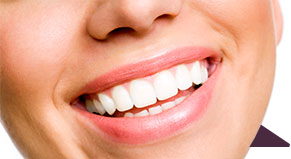How to Identify Mouth Cancer vs. Canker Sore
February 4th, 2016
 Finding a strange change in your mouth can be scary. You might not know why a mark has appeared, how long it will be there, or what it is. Since it could be a variety of different things, ranging from harmless to more serious, it’s important to visit a dentist or doctor when you find an unfamiliar sore or spot in your mouth.
Finding a strange change in your mouth can be scary. You might not know why a mark has appeared, how long it will be there, or what it is. Since it could be a variety of different things, ranging from harmless to more serious, it’s important to visit a dentist or doctor when you find an unfamiliar sore or spot in your mouth.
In the meantime, you might want to get a better idea of two common but very different types of oral issues that often get confused: mouth cancer and canker sores. Today, our dentists are going to break down the difference between mouth cancer and canker sores so that you can better identify what’s going on in your mouth.
What Mouth Cancer Looks Like
Surprising to many, mouth cancer can grow in your mouth just like it can anywhere else in your body. According to the American Dental Association (ADA), those who use tobacco and/or drink are more likely to develop mouth cancer, as are people over the age of 44 and, more specifically, men. HPV is also the leading cause of cancer at the very back of the mouth and throat (technically known as oropharyngeal cancer).
Mouth cancer typically affects your cheeks, lips, tongue, or throat. It usually shows up as flat, white patches on any of those areas. These patches are made up of cells that can lead to cancer. Mixed red and white patches and bright red patches are also signs of trouble.
Mouth cancer patches can be rough and hard to scrape off. These areas can also be benign, but it’s always important to have a dentist check to make sure.
Mouthcancer.org also notes that painless ulcers, or canker sores, that don’t heal can be a form of mouth cancer. The ADA suggests getting your mouth checked out if signs and symptoms of mouth cancer persist after two weeks.
Finally, cancer in the throat may cause symptoms such as difficult or painful swallowing, a swollen but painless tonsil, an ongoing sore throat or hoarse voice, a painless lump on the outside of your neck that has been there for at least two weeks, and constant coughing, according to the Oral Cancer Foundation.
What Canker Sores Look Like
Unlike mouth cancer, minor canker sores are virtually harmless, except for the annoying discomfort they can cause your mouth. They may be caused by several things, including stress, hormonal shifts, food sensitivities, and toothpaste, according to the Mayo Clinic.
The defining difference between canker sores and mouth cancer is pain. Canker sores can be extremely painful. Thankfully, the pain tends to lessen over a few days, and the sore usually heals up by itself within two weeks.
Canker sores also look different than patchy mouth cancer. A canker sore looks like an ulcer or sore. They are typically round with a depressed center and may appear to be white, grey or yellow. The outer rim of the canker sore is typically red.
If you have a canker sore that doesn’t heal within three weeks, you should see a dentist, according to DentalHealth.org. Mouth cancer can appear in the form of an ulcer.
Do you have a sore you would like us to take a look at in Chicago? Contact Water Tower Dental Care! We’re experts on identifying mouth cancer vs. canker sores.







 Website Powered by Sesame 24-7™
Website Powered by Sesame 24-7™